The first surprise is that this hasn’t been done before. The poems that comprise TS Eliot’s Four Quartets are so embedded with references to dance that presenting them alongside choreography feels inevitable. Perhaps it took an anniversary – 75 years since publication – for Eliot’s estate to grant permission: this is the first authorised production on a theatre stage of that great meditation on time and timelessness, memory and being.
The second surprise is that the choreographer, Pam Tanowitz, is unknown this side of the Atlantic. An American whose work builds on the barefoot legacies of Merce Cunningham and Trisha Brown, she makes her European debut as a fully mature talent that demands to be on our radar.
 In Four Quartets her strategy is two-fold, using the four long poems as thematic inspiration and also as a musical score. Appropriately, the text is delivered (in a perfectly judged, unmannered style by the American actress Kathleen Chalfant) from a desk set among four musicians (violin, viola, cello and harp). Commissioned music by the Finnish composer Kaija Saariaho adds to the soundscape – background to the poems’ foreground. Four paintings by the artist Brice Marden provide stage design, discreetly varying the possibilities for exits and entries by means of concealed doorways and wheeled screens.
In Four Quartets her strategy is two-fold, using the four long poems as thematic inspiration and also as a musical score. Appropriately, the text is delivered (in a perfectly judged, unmannered style by the American actress Kathleen Chalfant) from a desk set among four musicians (violin, viola, cello and harp). Commissioned music by the Finnish composer Kaija Saariaho adds to the soundscape – background to the poems’ foreground. Four paintings by the artist Brice Marden provide stage design, discreetly varying the possibilities for exits and entries by means of concealed doorways and wheeled screens.
This doesn't stop the listener thinking, but liberates the imagination. We understand Eliot's verse in a less literal way
The risk was that this would all be too much, distracting from the words. Not at all. Each element finds its place, supporting and amplifying meaning. On the most basic level, for instance, when faced with skittering runs, hops and balances which we know have no inherent significance, we worry less about not understanding Eliot’s every line. Watching the dance while hearing the verse shows the audience a way through the denser thickets of the poet’s philisophical explorations. That’s not to say it stops the listener thinking, but it liberates the imagination. We understand in a less literal way. Eliot himself said that “genuine poetry can be appreciated before it is understood”, and here’s proof.
Tanowitz’s ensemble of nine superb dancers (briefly 10 including her) are dressed in pale draped pyjamas, and have the look of Greek statuary when holding a pose. In motion, they are rose petals, leaves, the fluttering of birds, the ghosts of past lives. In one exquisite moment in “Burnt Norton” when a line of dancers join hands we fleetingly glimpse the mysterious laughing children who recur throughout the poem.
 Rarely in my experience has abstract contemporary dance – almost an hour and a half of it, without a break – been so varied or compelling. The rhythms of Tanowitz’s steps, often marked by fast patterings of bare soles, are a counterpoint to Eliot’s words, yet never interfere. It proves remarkably easy to experience both at the same time, as if from stereo speakers.
Rarely in my experience has abstract contemporary dance – almost an hour and a half of it, without a break – been so varied or compelling. The rhythms of Tanowitz’s steps, often marked by fast patterings of bare soles, are a counterpoint to Eliot’s words, yet never interfere. It proves remarkably easy to experience both at the same time, as if from stereo speakers.
Nor is this dance difficult to love: it’s just so beautiful, its technical rigour cloaked in lyricism. Tanowitz pays particular attention to the dancers’ feet, and you quickly find yourself mesmerised by the myriad ways she uses them – for stabbing, stroking, slapping or pointing, or flexed at different heights. There are jumps, too, whose miraculously silent landings effortlessly bring to mind the poems’ phantom presences: “There they were, dignified, invisible/ Moving without pressure”.
“At the still point of the turning world … there the dance is,” wrote Eliot, grappling with paradox. This production’s detailed search for the synergies between words, music and movement would surely have had his approval. A return run, and longer, please.




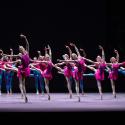

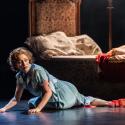


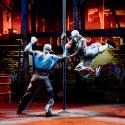


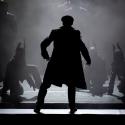
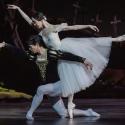
Add comment